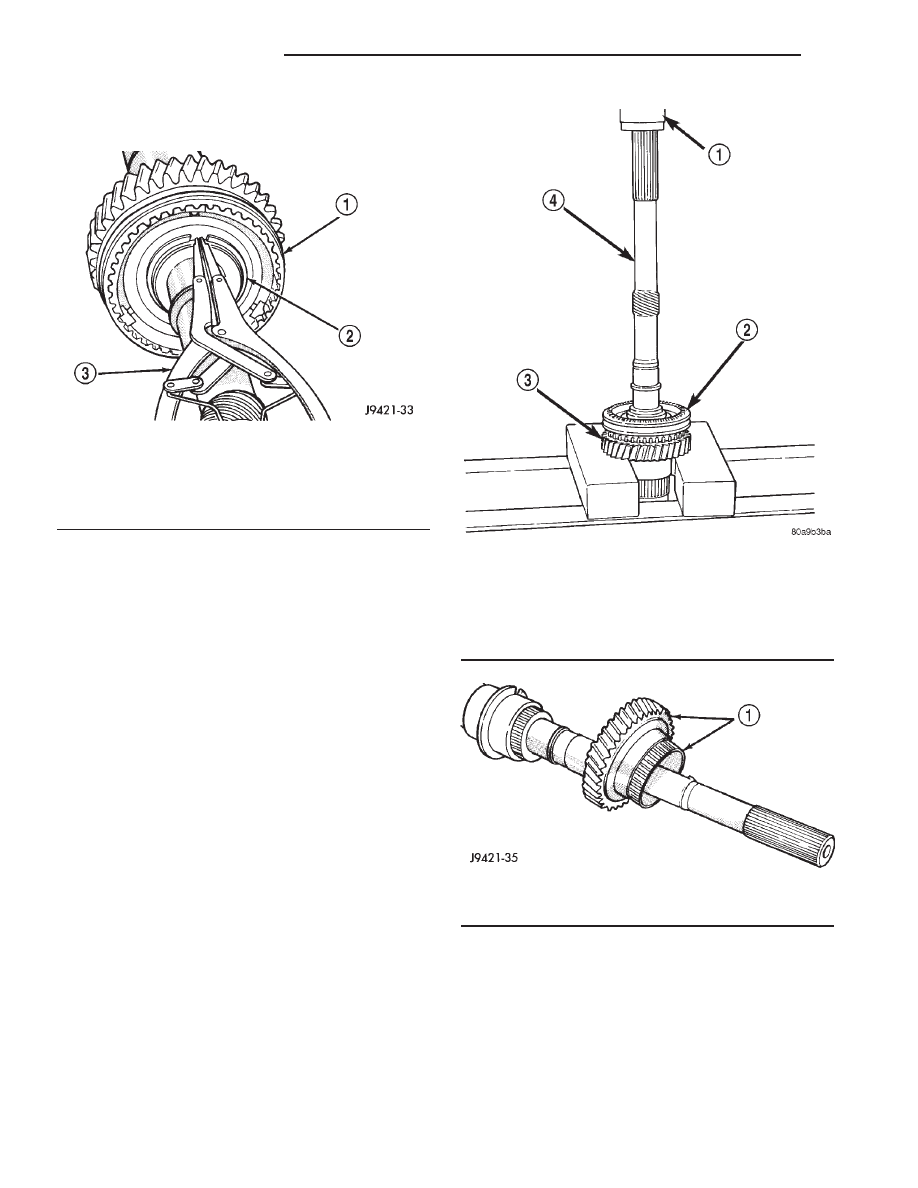Dodge Dakota (R1). Manual - part 601

(16) Remove fifth-reverse synchro hub snap ring
(Fig. 46).
(17) Remove fifth-reverse synchro hub and sleeve
with a press (Fig. 47).
(18) Remove reverse gear and needle bearing (Fig.
48).
REVERSE IDLER
(1) Remove idler gear snap rings (Fig. 49).
(2) Remove thrust washer, wave washer, thrust
plate and idler gear from shaft.
(3) Remove idler gear needle bearing from shaft.
CLEANING
Clean the gears, shafts, shift components and
transmission housings with a standard parts clean-
ing solvent. Do not use acid or corrosive base sol-
vents. Dry all parts except bearings with compressed
air.
Clean the shaft bearings with a mild solvent such
as Mopar® degreasing solvent, Gunk, or similar sol-
vents. Do not dry the bearings with compressed air.
Allow the bearings to either air dry, or wipe them dry
with clean shop towels.
Fig. 46 FIFTH-REVERSE SYNCHRO HUB SNAP
RING
1 - FIFTH-REVERSE SYNCHRO HUB AND SLEEVE
2 - SYNCHRO HUB SNAP RING
3 - SNAP RING PLIERS
Fig. 47 FIFTH-REVERSE SYNCHRO HUB AND
SLEEVE
1 - PRESS
2 - FIFTH-REVERSE SYNCHRO HUB AND SLEEVE
3 - REVERSE GEAR
4 - OUTPUT SHAFT
Fig. 48 REVERSE GEAR AND NEEDLE BEARING
1 - REVERSE GEAR AND NEEDLE BEARING
21 - 48
MANUAL - NV3500
AN
MANUAL - NV3500 (Continued)